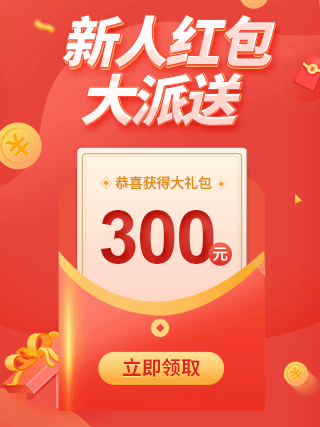- 所在位置:
- 首页 >
- 编程技术 >
- JavaScript >
- Echarts中如何制作一个七天的天气预报,方法是什么
Echarts中如何制作一个七天的天气预报,方法是什么
Admin 2022-07-02 群英技术资讯 1592 次浏览
 很多朋友都对“Echarts中如何制作一个七天的天气预报,方法是什么”的内容比较感兴趣,对此小编整理了相关的知识分享给大家做个参考,希望大家阅读完这篇文章后可以有所收获,那么感兴趣的朋友就继续往下看吧!
很多朋友都对“Echarts中如何制作一个七天的天气预报,方法是什么”的内容比较感兴趣,对此小编整理了相关的知识分享给大家做个参考,希望大家阅读完这篇文章后可以有所收获,那么感兴趣的朋友就继续往下看吧!UI设计图

Echarts示例效果

前言
对于UI给出的设计图,各个气象网站都有类似的效果,实现方式大可归为两种:
- 网格布局+图表框架绘制温度曲线;
- 网格布局+canvas自绘温度曲线;
这两种实现方式的共同点都是将曲线和上面的描述文字拆分开来,这样做难点是要实现日期图标部分和气温曲线部分的自适应对齐。因为我CSS经验相对比较薄弱,并且使用Echarts图表框架相对较多,所以决定尝试使用Echarts(版本:4.6.0)来实现上面的效果。查看文档后发现Echarts支持多X轴和富文本显示,可以通过调整X轴偏移量来控制显示位置,同时富文本支持设置背景图标,可以用来显示天气图标。一番测试后得到下面的示例代码。
示例代码
下面这段代码可以考入Echarts直接运行:
var option = {
grid: {
show: true,
backgroundColor: 'transparent',
opacity: 0.3,
borderWidth: '0',
top: '180',
bottom: '0'
},
tooltip: {
trigger: 'axis'
},
legend: {
show: false
},
xAxis: [
// 日期
{
type: 'category',
boundaryGap: false,
position: 'top',
offset: 130,
zlevel: 100,
axisLine: {
show: false
},
axisTick: {
show: false
},
axisLabel: {
interval: 0,
formatter: [
'{a|{value}}'
].join('\n'),
rich: {
a: {
// color: 'white',
fontSize: 18
}
}
},
nameTextStyle: {
},
data: ["25日","26日","27日","28日","29日","30日","31日"]
},
// 星期
{
type: 'category',
boundaryGap: false,
position: 'top',
offset: 110,
zlevel: 100,
axisLine: {
show: false
},
axisTick: {
show: false
},
axisLabel: {
interval: 0,
formatter: [
'{a|{value}}'
].join('\n'),
rich: {
a: {
// color: 'white',
fontSize: 14
}
}
},
nameTextStyle: {
fontWeight: 'bold',
fontSize: 19
},
data: ["周一","周二","周三","周四","周五","周六","周日"]
},
// 天气图标
{
type: 'category',
boundaryGap: false,
position: 'top',
offset: 20,
zlevel: 100,
axisLine: {
show: false
},
axisTick: {
show: false
},
axisLabel: {
interval: 0,
formatter: function(value, index) {
return '{' + index + '| }\n{b|' + value + '}'
},
rich: {
0: {
backgroundColor: {
// image: require('@/assets/weather_icon/' + this.weatherIconDic[this.weatherdata.weather[0]] + '.png')
image: 'https://d.scggqx.com/forecast/img/小雨.png'
},
height: 40,
width: 40
},
1: {
backgroundColor: {
// image: require('@/assets/weather_icon/' + this.weatherIconDic[this.weatherdata.weather[1]] + '.png')
image: 'https://d.scggqx.com/forecast/img/小雨.png'
},
height: 40,
width: 40
},
2: {
backgroundColor: {
// image: require('@/assets/weather_icon/' + this.weatherIconDic[this.weatherdata.weather[2]] + '.png')
image: 'https://d.scggqx.com/forecast/img/阴.png'
},
height: 40,
width: 40
},
3: {
backgroundColor: {
// image: require('@/assets/weather_icon/' + this.weatherIconDic[this.weatherdata.weather[3]] + '.png')
image: 'https://d.scggqx.com/forecast/img/小雨.png'
},
height: 40,
width: 40
},
4: {
backgroundColor: {
// image: require('@/assets/weather_icon/' + this.weatherIconDic[this.weatherdata.weather[4]] + '.png')
image: 'https://d.scggqx.com/forecast/img/多云.png'
},
height: 40,
width: 40
},
5: {
backgroundColor: {
// image: require('@/assets/weather_icon/' + this.weatherIconDic[this.weatherdata.weather[5]] + '.png')
image: 'https://d.scggqx.com/forecast/img/小雨.png'
},
height: 40,
width: 40
},
6: {
backgroundColor: {
// image: require('@/assets/weather_icon/' + this.weatherIconDic[this.weatherdata.weather[6]] + '.png')
image: 'https://d.scggqx.com/forecast/img/小雨.png'
},
height: 40,
width: 40
},
b: {
// color: 'white',
fontSize: 12,
lineHeight: 30,
height: 20
}
}
},
nameTextStyle: {
fontWeight: 'bold',
fontSize: 19
},
// data: this.weatherdata.weather
data: ["小雨","小雨","阴","小雨","多云","小雨","小雨"]
}
],
yAxis: {
type: 'value',
show: false,
axisLabel: {
formatter: '{value} °C',
color: 'white'
}
},
series: [
{
name: '最高气温',
type: 'line',
data: ["16.3","16.2","17.6","14.2","17.6","15.7","14.3"],
symbol: 'emptyCircle',
symbolSize: 10,
showSymbol: true,
smooth: true,
itemStyle: {
normal: {
color: '#C95843'
}
},
label: {
show: true,
position: 'top',
// color: 'white',
formatter: '{c} °C'
},
lineStyle: {
width: 1,
// color: 'white'
},
areaStyle: {
opacity: 1,
color: 'transparent'
}
},
{
name: '最低气温',
type: 'line',
data: ["13.4","12.8","13.5","12.5","12.4","13.2","13"],
symbol: 'emptyCircle',
symbolSize: 10,
showSymbol: true,
smooth: true,
itemStyle: {
normal: {
color: 'blue'
}
},
label: {
show: true,
position: 'bottom',
// color: 'white',
formatter: '{c} °C'
},
lineStyle: {
width: 1,
// color: 'white'
},
areaStyle: {
opacity: 1,
color: 'transparent'
}
}
]
}
上面的代码,最难的部分就是天气图标的设置,由于axisLabel的formatter方法中的value值没法在富文本中使用,所以这里在formatter方法中将value的下标设置成了富文本中的css名,然后在设置天气图标时使用下标获取需要显示的图标名称。
// axisLabel的formatter方法
formatter: function(value, index) {
return '{' + index + '| }\n{b|' + value + '}'
}
// axisLabel的rich方法
rich: {
index: {
backgroundColor: {
image: require('@/assets/weather_icon/' + this.weatherIconDic[this.weatherdata.weather[index]] + '.png')
},
height: 40,
width: 40
}
}
注:
1、this.weatherIconDic是我本地定义的一个天气图标的数据字典。(如:{ ‘晴': ‘a00', ‘多云': ‘a01', ‘阴': ‘a02', ‘阵雨': ‘a03', ‘雷阵雨': ‘a04', ‘冰雹': ‘a05', ‘雨夹雪': ‘a06', ‘小雨': ‘a07', ‘中雨': ‘a08', ‘大雨': ‘a09', ‘暴雨': ‘a10', ‘大暴雨': ‘a11', ‘特大暴雨': ‘a12', ‘阵雪': ‘a13', ‘小雪': ‘a14', ‘中雪': ‘a15', ‘大雪': ‘a16', ‘暴雪': ‘a17', ‘雾': ‘a18', ‘冻雨': ‘a19', ‘沙尘暴': ‘a20', ‘小到中雨': ‘a21', ‘中雨-大雨': ‘a22', ‘大雨-暴雨': ‘a23', ‘暴雨-大暴雨': ‘a24', ‘大暴雨-特大暴雨': ‘a25', ‘小雪-中雪': ‘a26', ‘中雪-大雪': ‘a27', ‘大雪-暴雪': ‘a28', ‘浮尘': ‘a29', ‘扬沙': ‘a30', ‘强沙尘暴': ‘a31' })
2、this.weatherdata.weather是后端传回来的天气类型。(如:[“小雨”,“小雨”,“阴”,“小雨”,“多云”,“小雨”,“小雨”])
最终效果

这篇关于“Echarts中如何制作一个七天的天气预报,方法是什么”的文章就介绍到这了,更多相关的内容,欢迎关注群英网络,小编将为大家输出更多高质量的实用文章!

免责声明:本站发布的内容(图片、视频和文字)以原创、转载和分享为主,文章观点不代表本网站立场,如果涉及侵权请联系站长邮箱:mmqy2019@163.com进行举报,并提供相关证据,查实之后,将立刻删除涉嫌侵权内容。
猜你喜欢
-
浅谈访问vue实例this指针的相关知识
浅谈访问vue实例this指针的相关知识,一些朋友可能会遇到这方面的问题,对此在下文小编向大家来讲解一下,内容详细,易于理解,希望大家阅读完这篇能有收获哦,有需要的朋友就往下看吧!
-
用原生JS如何检查对象是否为空,方法是什么
这篇文章主要为大家介绍了原生javascript中检查对象是否为空示例实现,有需要的朋友可以借鉴参考下,希望能够有所帮助,祝大家多多进步,早日升职加薪
-
async与await捕捉错误是怎样的
async与await捕捉错误正常的输出时try catch捕捉错误多个异步嵌套时 await-to-js异步嵌套使用了try,代码相对不够智能总结async与await捕捉错误正常的输出
-
JS的特点及与Java的区别是什么
本篇文章给大家带来了关于javascript的相关知识,其中主要整理了引入的相关问题,Javascript是一种由Netscape(网景)的LiveScript发展而来的原型化继承的面向对象的动态类型的区分大小写的客户端脚本语言,下面一起来看一下,希望对大家有帮助。
-
JSON.stringify的用法是什么?一文带你看懂
JSON.stringify的用法是什么?JSON.stringify()方法就是将一个JavaScript值(对象或者数组)转换为一个 JSON字符串,小编觉得JSON.stringify()方法比较实用,因此分享给大家做个参考,感兴趣的朋友就接着看吧。
成为群英会员,开启智能安全云计算之旅
立即注册Copyright © QY Network Company Ltd. All Rights Reserved. 2003-2020 群英 版权所有
增值电信经营许可证 : B1.B2-20140078 粤ICP备09006778号 域名注册商资质 粤 D3.1-20240008





